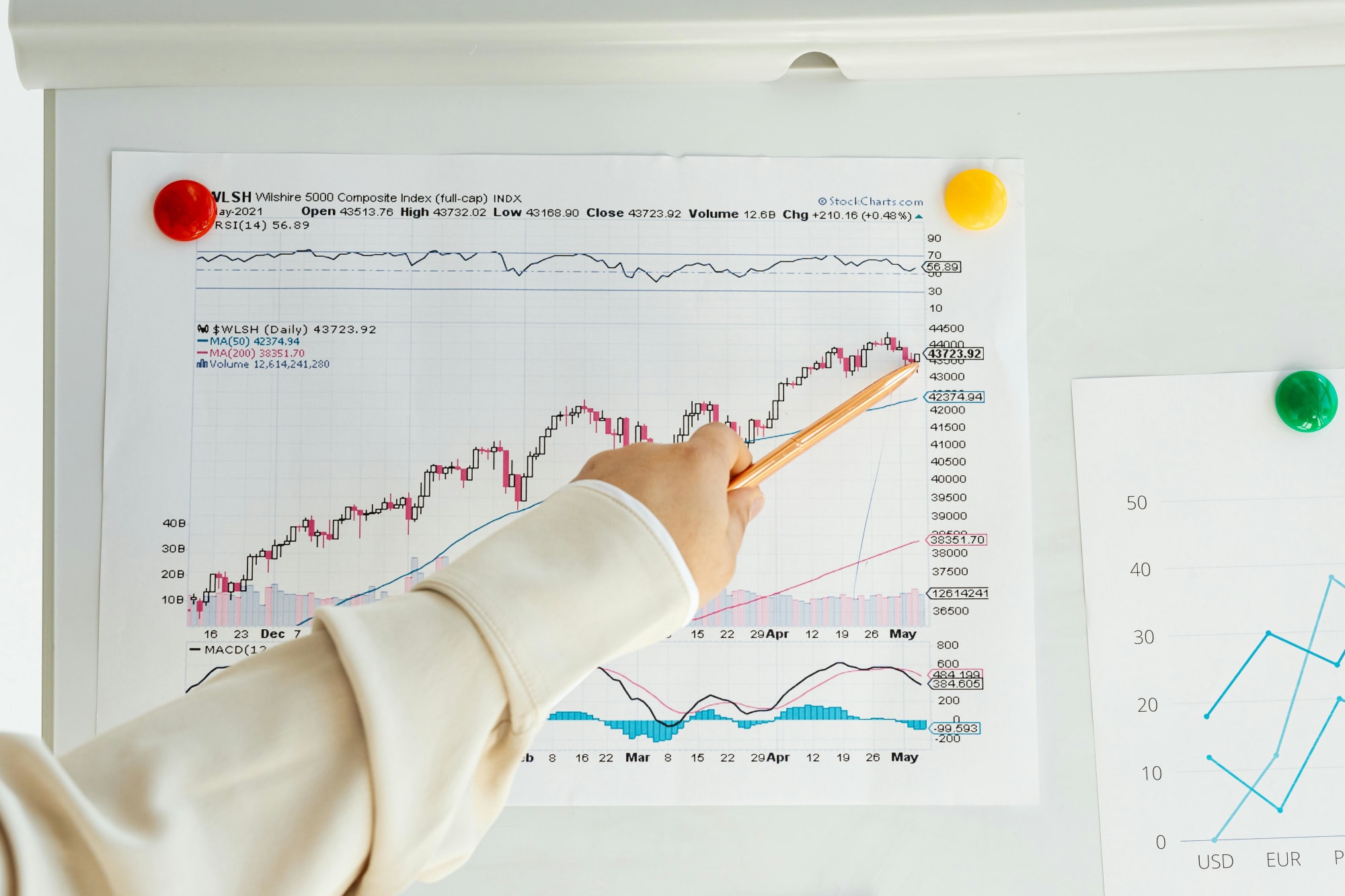Invest
How CSIRO plans to turn landfills into a billion-dollar industry, tripling jobs
Invest
How CSIRO plans to turn landfills into a billion-dollar industry, tripling jobs
Australia’s national science agency is saving plastics, glass, paper and tyres from landfills and turning them into a billion-dollar industry that is set to triple in job creation, an official statement has revealed.
How CSIRO plans to turn landfills into a billion-dollar industry, tripling jobs
Australia’s national science agency is saving plastics, glass, paper and tyres from landfills and turning them into a billion-dollar industry that is set to triple in job creation, an official statement has revealed.

Under the National Circular Economy Roadmap, CSIRO plans to transform the Australian economy into a “circular economy”, which would manage, reuse and recycle waste, turning landfills into economic benefits.
The proposal could more than triple job creation from resource recovery in Australia, where the recycling sector currently generates 9.2 jobs per 10,000 tonnes of waste, compared with only 2.8 jobs for the same amount of waste sent to landfills.
In a statement issued this week, CSIRO state Australia would only need a recovery rate of 5 per cent, to add an additional estimated $1 billion to GDP, while lowering emissions by 27 per cent.
CSIRO chief executive Dr Larry Marshall believes science and technology can drive Australia’s next wave of economic opportunities.

“Australia is among the world’s best in advanced manufacturing and environmental research, and that unique science can turn industry and environment into partners by making sustainability profitable,” Dr Marshall said.
“Science can transform our economy into a circular one that renews and reuses what we previously discarded, and indeed a virtuous circle that creates higher paid jobs, advances new Australian technology, and protects our environment.”
Hidden gems in Australia’s waste
According to CSIRO, Australian consumers' and businesses’ lack of awareness and understanding about transitioning to a circular economy is costing the country billions.
As it currently stands, Australia loses out on $419 million every year by not recycling PET and HDPE plastics properly.
Broken down, the cost of sending paper fibres to landfills generates a $115 million waste, while littering is costing $70 million a year to clean up. Australia is also flushing away billions each year by sending lithium from batteries to landfills, which CSIRO plans to turn into a $2.5 billion opportunity by 2036.
According to the roadmap and partnering industries, CSIRO can create an economy that renews and reuses these products, creating higher-paying jobs, bringing forward new technology and protecting the environment in the process.
“We’re on a mission to make it real. The practical path laid out in this roadmap is part of CSIRO’s mission-led focus on using science to solve our greatest challenges while driving our economic recovery and building future resilience.”
Project leader Dr Heinz Schandl said the roadmap was created to shape a circular economy strategy for Australia to address fundamental environmental issues and foster regional employment.
“Our traditional ‘take, make, dispose’ consumption pattern is hitting two walls: ever more expensive primary materials and ever more unacceptable ways of dealing with waste,” Dr Schandl said.
“The global pandemic has disrupted global supply chains, which challenges Australia to be self-sufficient with sovereign manufacturing capability.”
The roadmap identifies six elements for moving towards a circular economy of plastics, paper, glass and tyres:
- Retain material through use and collection
- Upscale and innovate recycling technologies
- Innovate and collaborate in design and manufacture
- Develop markets for secondary materials and the products that use them
- Streamline nationally consistent governance
- Secure a national zero waste culture.
About the author

About the author


Economy
RBA's hawkish stance reflects inflation concerns, State Street economist comments
In a recent statement, the Reserve Bank of Australia (RBA) has signaled a hawkish stance on interest rates, drawing insights from financial experts about the implications for Australia's economic ...Read more

Economy
Navigating the inflation maze: How CFOs can outsmart economic hurdles in Australia
Fresh inflation data have cooled expectations of near-term rate cuts in Australia, intensifying pressure on margins, capital allocation and demand. Rather than wait for monetary relief that may not ...Read more

Economy
Inflation concerns rise as Australia's CPI climbs to 3.8% in October
Australia's latest Consumer Price Index (CPI) figures have sent ripples through the economy, with headline inflation accelerating to 3.8% year-on-year in October, up from 3.6% in September. The data, ...Read more

Economy
October CPI results pose challenges for RBA’s monetary policy stance
In a surprising turn of events, the October Consumer Price Index (CPI) data has raised eyebrows among economists and market strategists, revealing stronger-than-expected inflationary pressures in ...Read more

Economy
Global deal activity declines by 6% amid economic uncertainty, reports GlobalData
In a year characterised by economic turbulence and evolving market conditions, global deal activity has witnessed a notable downturn during the first ten months of 2025. According to GlobalData, a ...Read more

Economy
Australia’s softening labour market puts another RBA cut in play — here’s what business should do now
A four-year high in unemployment has revived expectations the Reserve Bank could deliver another rate cut as soon as November. With quarterly GDP growth running at 0.6 per cent and annual growth at ...Read more

Economy
Rising CPI reinforces RBA’s stance as rate cut expectations remain: State Street
State Street Global Advisors says the Reserve Bank of Australia (RBA) is likely to hold its current policy outlook following the release of September quarter inflation data, which showed an unexpected ...Read more

Economy
NSW SES boosts tsunami preparedness ahead of World Tsunami Awareness Day
As World Tsunami Awareness Day approaches on 5 November, the New South Wales State Emergency Service (NSW SES) is ramping up efforts to enhance tsunami preparedness along the east coastRead more

Economy
RBA's hawkish stance reflects inflation concerns, State Street economist comments
In a recent statement, the Reserve Bank of Australia (RBA) has signaled a hawkish stance on interest rates, drawing insights from financial experts about the implications for Australia's economic ...Read more

Economy
Navigating the inflation maze: How CFOs can outsmart economic hurdles in Australia
Fresh inflation data have cooled expectations of near-term rate cuts in Australia, intensifying pressure on margins, capital allocation and demand. Rather than wait for monetary relief that may not ...Read more

Economy
Inflation concerns rise as Australia's CPI climbs to 3.8% in October
Australia's latest Consumer Price Index (CPI) figures have sent ripples through the economy, with headline inflation accelerating to 3.8% year-on-year in October, up from 3.6% in September. The data, ...Read more

Economy
October CPI results pose challenges for RBA’s monetary policy stance
In a surprising turn of events, the October Consumer Price Index (CPI) data has raised eyebrows among economists and market strategists, revealing stronger-than-expected inflationary pressures in ...Read more

Economy
Global deal activity declines by 6% amid economic uncertainty, reports GlobalData
In a year characterised by economic turbulence and evolving market conditions, global deal activity has witnessed a notable downturn during the first ten months of 2025. According to GlobalData, a ...Read more

Economy
Australia’s softening labour market puts another RBA cut in play — here’s what business should do now
A four-year high in unemployment has revived expectations the Reserve Bank could deliver another rate cut as soon as November. With quarterly GDP growth running at 0.6 per cent and annual growth at ...Read more

Economy
Rising CPI reinforces RBA’s stance as rate cut expectations remain: State Street
State Street Global Advisors says the Reserve Bank of Australia (RBA) is likely to hold its current policy outlook following the release of September quarter inflation data, which showed an unexpected ...Read more

Economy
NSW SES boosts tsunami preparedness ahead of World Tsunami Awareness Day
As World Tsunami Awareness Day approaches on 5 November, the New South Wales State Emergency Service (NSW SES) is ramping up efforts to enhance tsunami preparedness along the east coastRead more








